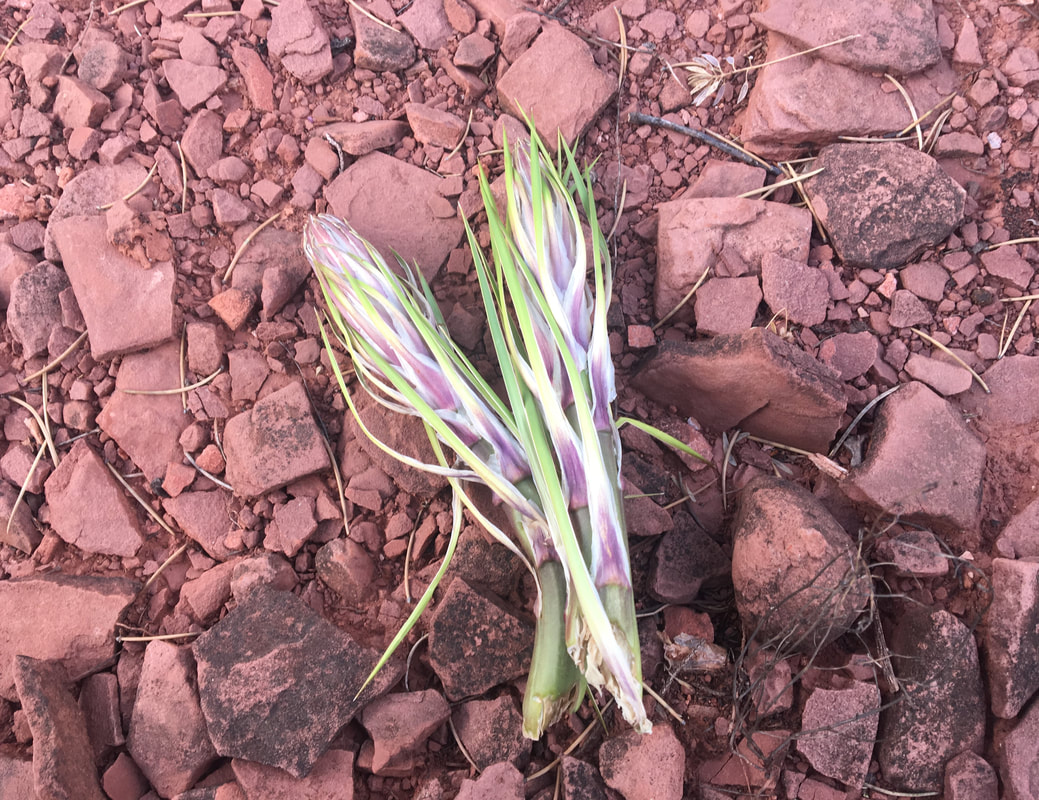|
What fascinated us that summer was Mr. Burden’s bomb shelter. We came across it deep in the woods one day, a squat gray concrete bunker with heavy metal doors that stood open. Inside, four or five spacious storerooms filled with cans of food and water. We’d never seen water in a can before. The place was filled with novelty and mystery.
It looked to me like Pharaoh’s tomb. There were rows of geraniums planted on the roof. “To disguise it,” said one of my older cousins. “From the air,” added another. “But no one has a garden of geraniums,” said my sister, the future botanist. “They’re houseplants. Have you ever seen a garden of geraniums?” We decided Mr. Burden wasn’t a detail man. He’d ordered a roof garden to disguise his bomb shelter from enemy planes, and if geraniums were on sale that week, he got geraniums. Inside, it was cold and echoey. I tried to imagine the Burden family holed up in this uninviting place while a nuclear bomb destroyed the world around them. It took out their friends, their enemies, their schools, their livelihood. It took out their home, their gardens, their artwork. It destroyed huge swatches of the natural world that gave them joy. The fires ignited by the blast burned right up to the door of their bomb shelter. The geraniums didn’t survive. Nothing did. I was only ten, but I’d had a Cold War childhood. Earlier that year, the Cuban Missile Crisis put New York City in the crosshairs. I stood at the window of our Manhattan apartment and looked out at the eerie urban glow and wondered if Khrushchev really wanted to kill us all, and if so, how fast that would happen. I was initiated enough to understand the scope of destruction carried by nuclear weapons, and I felt the communal dread and fear. Air raid drills and fallout shelters were part of my vocabulary. We’d been ducking into our lockers at school and heeding the sirens for a couple of years. So to come upon the bomb shelter, the manifestation of dread and fear, was almost a relief. Here before us, set in concrete, was the enemy, the danger, and our constructed response to it. Here was the way to fight evil, because good and evil were much in fashion back then. We relied on one to sanctify the other. We were children, and that made sense. Apparently, it made sense to the adults in our world as well. The great divide between right and wrong must have been alive in Mr. Burden’s heart, given the effort he expended creating his tomb or fortress. Later, when none of us wanted to return to that place in the woods, the reason we gave was that it was ugly. No one wanted to admit to being afraid of it and what it stood for. Instead, it was ugly. I urge us to consider every possibility besides the ugly one in our dealings with those among us with whom we disagree. While good and evil are tempting paradigms, they’re more convenient than accurate, and in the end they lead to inconveniences from which it’s difficult or impossible to recover.
1 Comment
11/1/2020 04:42:26 pm
I remember seeing a bomb shelter as a kid in my neighborhood, far from the crosshairs of NYC. In our leafy suburb of Kansas City called Mission Hills, there it was, this red brown metal structure set in the earth. I don't think my friends and I could see inside, and my ignorance of the real dangers of nuclear war led me to believe this was an artifact of our neighbor's paranoia. I lived in somewhat blissful ignorance in those early years of the 70's, believing myself to be free and safe. And maybe I was in the bigger scheme. Innocence was a gift that I treasured.
Reply
Leave a Reply. |
AboutA place to discuss writing or anything on your mind. All visitors are invited to join the conversation by commenting on posts, asking questions, and joining the newsletter below for even more opportunities to connect and converse! Archives
April 2023
Categories |


 RSS Feed
RSS Feed